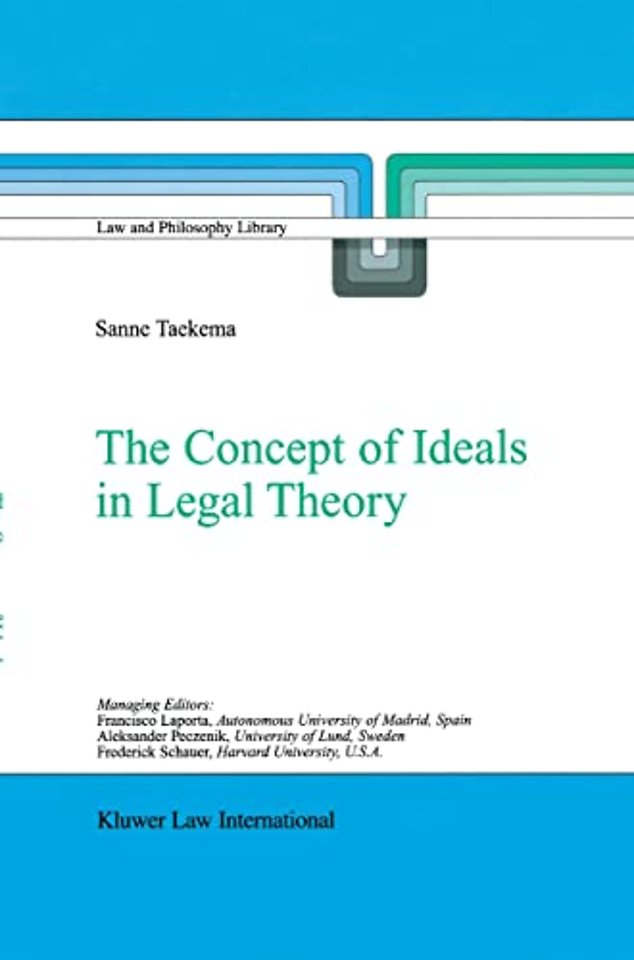Acknowledgements. <STRONG>1: Ideals in Legal Theory: An Introduction. 1.</STRONG> Common Sense Understandings. <STRONG>2.</STRONG> Ideals and Values. <STRONG>3.</STRONG> MORAL iDEALS, lEGAL iDEALS. <STRONG>4.</STRONG> Ideals, Principles and Rules. <STRONG>5.</STRONG> The Aims and Structure of this Book. <STRONG>2: Two Concepts of Ideals. 1.</STRONG> An Ontological Distinction. <STRONG>2.</STRONG> Ideals as Transcendent. <STRONG>3.</STRONG> Ideals as immanent. <STRONG>4.</STRONG> The Merits of the Two Concepts. <STRONG>3: The Theory of Gustav Radbruch. 1.</STRONG> Introduction. <STRONG>2.</STRONG> Radbruch's General Philosophical Views. <STRONG>3.</STRONG> Legal Philosophy and Legal Science. <STRONG>4</STRONG> From Legal Positivism to Natural Law? Radbruch's turn. <STRONG>4: Radbruch on Ideals. 1.</STRONG> Introduction. <STRONG>2.</STRONG> The Nature of Values. <STRONG>3.</STRONG> Values and Reality. <STRONG>4.</STRONG> The Interaction of Values. <STRONG>5.</STRONG> The Role of Values in Law. <STRONG>6.</STRONG> The Concept of Ideals. <STRONG>7.</STRONG> Conclusions. <STRONG>5:</STRONG> <STRONG>The Theory of Philip Selznik. 1.</STRONG> Introduction. <STRONG>2.</STRONG> The Influence of Pragmatism: Selznik's Method. <STRONG>3.</STRONG> Selznik's Social Thought. <STRONG>4.</STRONG> Legal Theory. <STRONG>6: Selznik on Ideals. 1.</STRONG> Introduction. <STRONG>2.</STRONG> The Nature of Ideals. <STRONG>3.</STRONG> The Latency of Values. <STRONG>4.</STRONG> Master Ideals. <STRONG>5.</STRONG> Ideals and Law. <STRONG>6.</STRONG> Conclusions. <STRONG>7: Developing a Concept of Ideals for Legal Theory. 1.</STRONG> Different Concepts. <STRONG>2.</STRONG> Evaluating Radbruch and Selznik. <STRONG>3.</STRONG> Improving the Pragmatist Theory of Values. <STRONG>4.</STRONG> Developing a Theory of Legal Ideals. <STRONG>5.</STRONG> Conclusions. <STRONG>8: Recognizing the Ideals of Law: Beyond Legal</STRONG> <STRONG>Positivism and Natural Law Theory. 1.</STRONG> The Aims of This Chapter. <STRONG>2.</STRONG> The Debate Between Legal Positivism and Natural Law Theory. <STRONG>3.</STRONG> Evaluating the Different Positions. <STRONG>4.</STRONG> Radbruch and Selznik as Non-Positivists. <STRONG>5.</STRONG> The Promise of a Pragmatist Theory. References. Index

